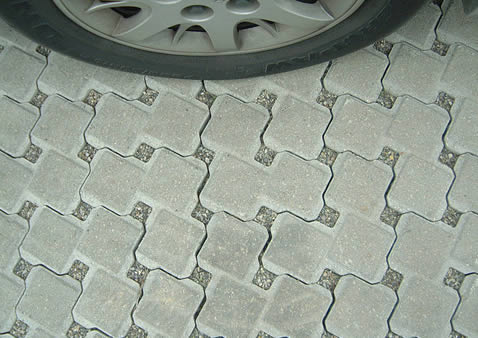Interlocking Brick Pavers Explained
To interlock means to interconnect two different parts together. This is often done to constrain motion. Interlocking brick pavers are often made from concrete or cement. They can be made to resemble cobblestone pathways. Thanks to the interlocking feature, installation of these pavers is relatively straightforward since it does not require mortar. Thanks to ease of installation, the job can be done more quickly.

As with other pavers, interlocking brick pavers also need sand in the joints. These pavers are a feasible option for covering walkways, driveways, deckings and patios.
Interlocking pavers can function as an alternative to almost all flooring applications that require concrete or bricks.
Interlocking pavers come in a wide array of shapes and sizes. Owing to their modular nature, they can be made in a number of fascination geometric shapes.
Why Interlocking Brick Pavers Are so Strong
With proper installation techniques, interlocking pavers, joint sand, edge restraint and bedding sand can be integrated into one sturdy and durable unit.
Due to their distinctive interlocking design, these pavers can transmit forces laterally. The load on interlocking pavers is spread over a larger area owing to arching of bridging between them. This reduces stress on the pavers thereby making them suitable for traffic and heavy loads. Interlocking pavers therefore serve reliably in heavy applications where other outdoor flooring solutions falter and fail.
It is not just the interlocking pattern that is responsible for the phenomenal strength of interlocking pavers. These pavers have strength that is multiple times greater than poured concrete.
Thanks to their ruggedness and wear resistance, interlocking brick pavers look fresh even after years of heavy use. They also have powerful resistance to adverse weather conditions. The wear resistance of interlocking brick pavers can be attributed in part to the sand that fills in the gaps between them. Mortar is not used since it would nullify the benefits that paving sand has to offer.
Although sand is the most widely used material for interlocking brick pavers, there are other good options as well. Concrete paver companies make special joint material which can be rather costly. Another well known material is bluestone screening. The major disadvantage of this material is that it can be problematic if compacted. The tiny stones can dent the surface of the pavers. Therefore, sand is the most popular choice since it is neither expensive nor is it damaging to the interlocking pavers in any way.
The sand bolsters the strength and integrity of interlocking concrete pavers in two main ways. First, it increases the force of friction between the pavers so that they adhere more strongly. Second, when compacted, the sand becomes very tight bringing together its grains even closer. The sand particles therefore hold together very well and require a much larger force of friction if they are to more past each other.
For interlocking paver installation, maintenance and restoration you can avail the services of the fully licensed West coast pavers. We are fully equipped to extend the whole gamut of paving contracting services.
